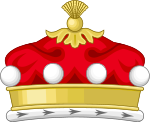
Baron Wakehurst, of Ardingly in the County of Sussex, is a title in the Peerage of the United Kingdom. [1] It was created on 29 June 1934 for the Conservative politician Gerald Loder, fifth son of Sir Robert Loder, 1st Baronet (see Loder Baronets for earlier history of the family). He had previously represented Brighton in the House of Commons and was the creator of Wakehurst Place Gardens in Ardingly, West Sussex. His only son, the second Baron, was also a Conservative politician and served as Governor of New South Wales and later as Governor of Northern Ireland. The third baron, who was known by his middle name Christopher, was a barrister and businessman. As of 2024 [update] the title is held by the latter's nephew Jan, the fifth Baron, who succeeded his cousin in that year.


